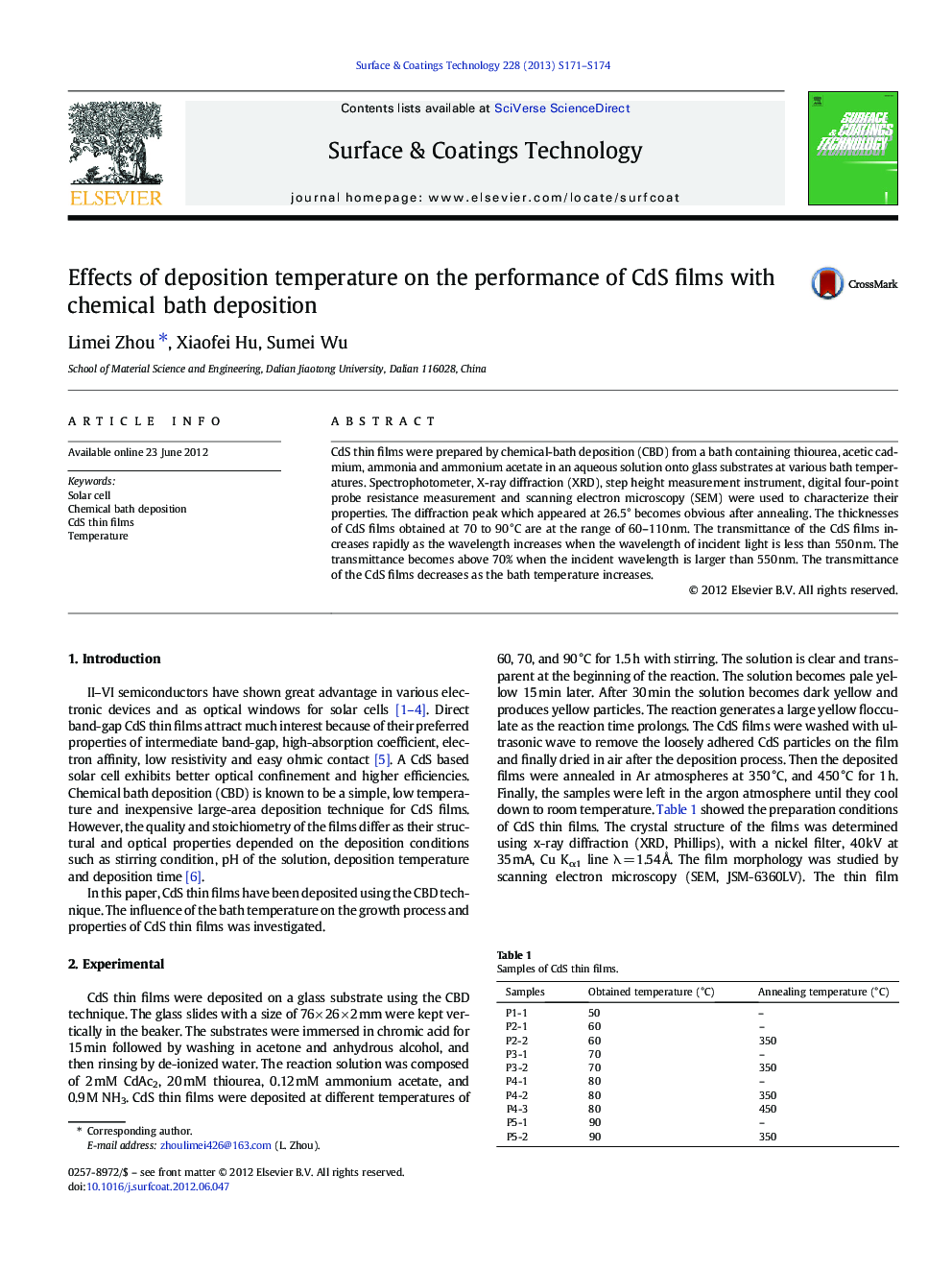| Article ID | Journal | Published Year | Pages | File Type |
|---|---|---|---|---|
| 1657818 | Surface and Coatings Technology | 2013 | 4 Pages |
CdS thin films were prepared by chemical-bath deposition (CBD) from a bath containing thiourea, acetic cadmium, ammonia and ammonium acetate in an aqueous solution onto glass substrates at various bath temperatures. Spectrophotometer, X-ray diffraction (XRD), step height measurement instrument, digital four-point probe resistance measurement and scanning electron microscopy (SEM) were used to characterize their properties. The diffraction peak which appeared at 26.5° becomes obvious after annealing. The thicknesses of CdS films obtained at 70 to 90 °C are at the range of 60–110 nm. The transmittance of the CdS films increases rapidly as the wavelength increases when the wavelength of incident light is less than 550 nm. The transmittance becomes above 70% when the incident wavelength is larger than 550 nm. The transmittance of the CdS films decreases as the bath temperature increases.
► The annealing process can improve the crystallinity of CdS films. ► High quality CdS thin films were obtained when the bath temperature was at 70–80 °C. ► The particle sizes of deposited thin films are smaller than that of the annealed ones. ► The annealed film transmittance is above 70% when wavelength is larger than 550 nm. ► Transmittance of annealed CdS film is lower than the deposited ones from 550 nm.
